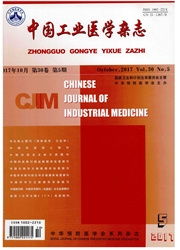

 中文摘要:
中文摘要:
目的研究锰干扰神经递质释放的分子机制,重点观察锰对神经元细胞内SNARE复合物蛋白及突触囊泡的影响。方法利用体外培养的神经元,用0-400μmol/L锰处理24 h后,观察细胞活力及培养液中LDH的释放量。根据结果挑选剂量为0、12.5、50、200μmol/L的氯化锰处理神经元24 h,测定SNARE复合物相关蛋白的基因及蛋白表达,以及活动性突触囊泡的数量。结果随着锰处理浓度的增加,神经元损伤逐渐加重;与对照组比较,Syntaxin1A的基因及蛋白表达均未见明显改变,SNAP 25的基因和蛋白表达均逐渐下降,VAMP 2的基因和蛋白表达均逐渐升高,进而导致SNARE复合物蛋白形成下降,同时活动性突触囊泡的数量明显减少。结论锰通过干扰SNARE复合物相关蛋白的表达,减少了神经元细胞内SNARE复合物蛋白的形成,进而导致活动性突触囊泡减少,造成神经递质释放紊乱。
 英文摘要:
英文摘要:
Objective To explore the molecular mechanism of neurotransmitter release disturbed by Mn,especially its effect on SNARE complex protein and synaptic vesicles in neurons. Methods After treating with different concentrations of Mn( 0—400 μmol/L) for 24 hours,the viability of cultured neurons and LDH release in culture medium were detected. According to the results,neurons were then treated with a series of concentrations of Mn( 0、12. 5、50、200 μmol / L) for 24 hours,the expression of SNARE complex gene and protein,and the number of active synaptic vesicles were determined. Results Higher concentration of Mn caused greater damage to neurons; expression of Syntaxin 1A gene and protein in neurons were not significantly affected by Mn,while the expression of SNAP 25 gene and protein were all decreased,but VAMP 2 gene and protein showed increased,all above lead to reduced formation of SNARE complex and reduction of active synaptic vesicles. Conclusion By disturbing the expression of SNARE complexes-related protein both at protein level and genetic level,Mn dicreased the formation of the SNARE complex,and the reduction of synaptic vesicles activities,then lead to the disorder of neurotransmitter release.
 同期刊论文项目
同期刊论文项目
 同项目期刊论文
同项目期刊论文
 期刊信息
期刊信息
